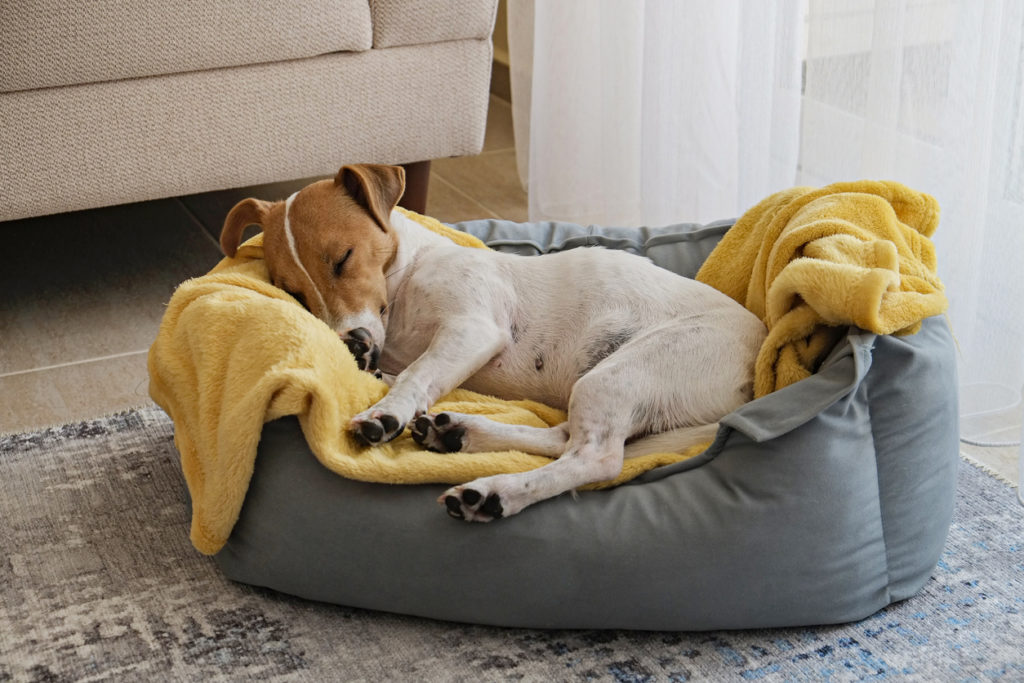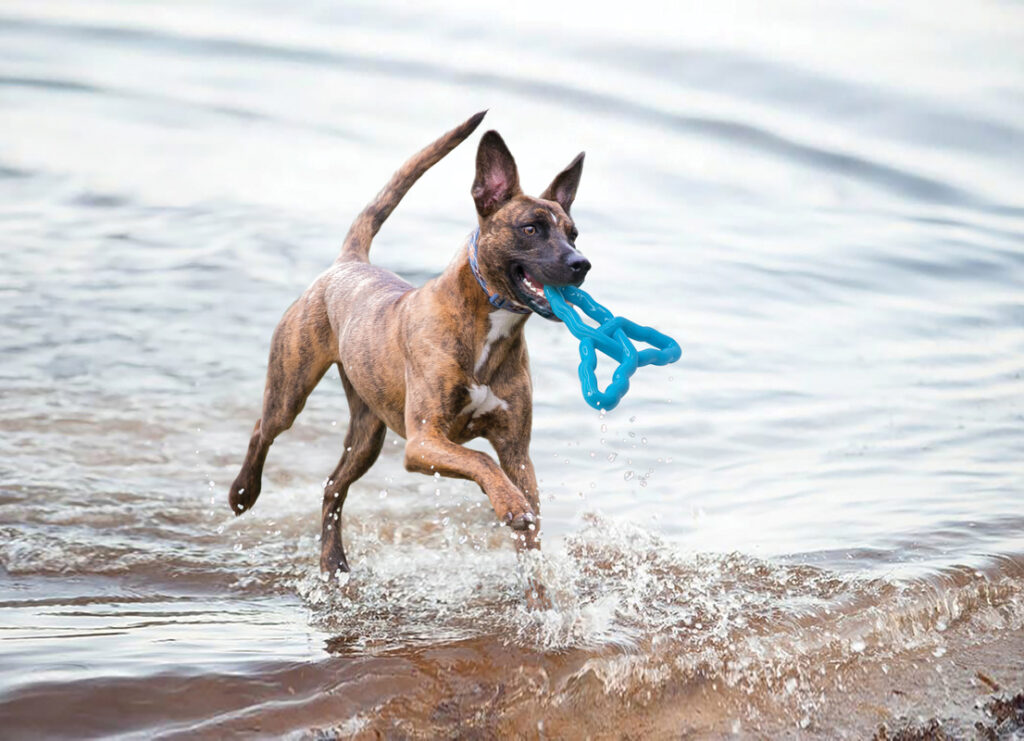As much as we love and adore our dogs, there is one con to being a pet parent. Our sweet, furry friends cannot speak to tell us if something is wrong! We have to rely on analyzing behavior cues to determine when our pet is not feeling well, either from illness or anxiety.
Let’s take a look at common symptoms of canine anxiety and how to help improve our pets’ lives.
Anxiety
Sometimes our sweet pals experience different types of anxiety for a variety of different reasons. It can be tough seeing your dog in distress, as we don’t like seeing our dogs not feel secure and safe.
Anxiety can bring out a host of unwanted behaviors in our dogs as they deal with this nervous feeling. Dog’s anxiety can be set off for a variety of reasons.
Separation Anxiety
We are bonded to our pets and our pets to us. They aren’t called man’s best friend for nothing. Sometimes our dog’s emotional attachment becomes too much, and they may become troubled when they are separated from us.
With many of us being at home during the pandemic, our dogs were able to spend much more time with us (they may have been the only fans of quarantining). With many people going back to work, this sudden change can spark anxiety in our dogs as they are not used to being alone.
When dogs have separation anxiety, they can show symptoms such as whining and pacing around us when they know we are going to leave soon. You may see this when you are putting your shoes on or you grab your keys from the hook by the door. Your dog has learned to associate these actions with you leaving, and they become distressed by the thought of being alone without you.
Dogs with separation anxiety can continue these behaviors after you have left home, and these behaviors may intensify into different ones. Your dog may bark excessively, angering your neighbors. Dogs may also destroy objects around them, like couch cushions or the carpet.
When your dog is missing you, you may find them curled up next to objects that smell like you. It isn’t unheard of for your dog to be curled up in your laundry basket full of worn clothes.
Fear
Fear can also induce anxiety in dogs. This can most commonly be seen on the Fourth of July and New Year’s Eve when fireworks are set off. Our beloved pets may bark, hide, whimper, and sometimes even run away.
This can also be witnessed during loud thunderstorms. Perhaps you have noticed your dog jump up next to you on the couch after a large thunderclap booms. Dogs are not fans of loud noises, and this can instill fear and makes our pets anxious.
Dogs can also be fearful when going to new places, like the veterinarian. If you only take your dog on car rides when it’s time for a check-up. They will associate the car with the veterinarian, and any car ride will become a fear-filled one. They may try to hide when they sense that they are about to go on a visit.
How To Alleviate Anxiety in Dogs
Our pets can provide comfort when we are feeling bad. We can reciprocate by providing hugs and comforting pets to our pets when they are feeling anxious. We don’t want our best friends to be nervous or scared.
We also don’t like to be anxious either, and we have come up with our own ways of soothing anxiety. For humans, the creation of a safe space can help us feel secure and comfortable and lessen our anxiety.
The same holds true for our pets. They love comfy spots (confirmed by your favorite spot on the couch being taken by your snoozing dog). For crate-trained dogs, their crate is like their room—a snug and safe place to curl up.
For dogs who are not crate-trained, you may see this urge for a snug place whenever a thunderstorm comes or when fireworks are set off. Your dog may want to take refuge in a closet, bathtub, or under the bed.
Your dog probably has a comfy spot, whether it be their crate or dog bed in the living room. This is their “spot” and one that they can commonly be found at. This is the place where they feel safe and secure.
Since we know our dogs enjoy their comfy spots and can seek comfort in enclosed places, it’s no surprise that there are dog beds created to help reduce symptoms of anxiety in dogs.
Anti-Anxiety Dog Beds
As humans, we value the space and time we can settle down and relax. This time can help soothe any frayed nerves and reduce the amount of anxiety we are feeling. For many, the comfort of our bed with our soft pillow and blankets helps us feel wrapped in warmth; this can help us feel better when our own anxiety has us feeling not so great.
Any dog lover can tell you that dogs like to get comfy and cozy just like humans do. We can help our furry friends feel better by giving them a soft refuge to lay down and feel safe. Dog anti-anxiety beds are a spot for your dogs to go to when they want to feel calmed and soothed.
Anti-anxiety dog beds are created to soothe your dog. Their soft texture feels warm and soft against their fur. The shape of the dog bed helps make your dog feel peaceful and offers a hugging sensation that can be comforting to a nervous dog, especially one who likes to burrow in blankets.
What To Look For In an Anti-Anxiety Dog Bed
When looking for an anti-anxiety dog bed, you’ll want to be sure that they tick off some of the following boxes:
Machine washable – we know our good boys and girls can sometimes be stinky boys and girls. Machine washable beds keep the bed hygienic and clean for our pets.
Waterproof – sometimes, when anxiety becomes too much, our pups may have an accident. Having a waterproof bed keeps any mess contained so it can be cleaned up more easily.
Correct size – although some of our bigger breeds may like to curl up in the tiniest space, making sure their bed is the right size helps our pups stretch out comfortably. If the bed is going in the crate, make sure it will fit there too.
Just plopping down an anti-anxiety bed is not the cure for your dog’s anxiety. You can promote your dog using their bed when they feel anxious by tucking treats in the bed before you leave the house or placing a piece of worn clothing in the folds of the bed so your dog can smell your scent.
There are countless anti-anxiety beds on the market, and these are some of our favorites to help your pal feel less anxious.
The Donut-Shaped Dog Bed
A donut-shaped bed is extra insulated and can radiate your own pet’s heat back to it. The round shape is perfect for those dogs who like to curl up. Plus, the soft ledge makes the perfect headrest.
Dogs often like to sleep back-to-back with their pack or owner. A donut-shaped dog bed replicates this feeling of protection well.
The Burrowing Dog Bed
If your pup is a burrower, look for a dog bed that comes with a loosely-attached blanket. The burrowing dog will appreciate high walls and perhaps a shag material that they can really push their snoot into. This bed comes in a variety of sizes, including the classic square and circle.
Cozy Cave Dog Beds
If your dog enjoys their crate or being under the bed, a cave-style dog bed is an excellent choice for them. These beds can be compared to a sleeping bag, with a loosely-attached blanket that your dog can slip right under. Some cave beds have a more structured top that your dog can enter like a small cave.
If your dog is a crate-lover, some cave beds are designed to slip right into their crate—kind of like a cave in a cave, the ultimate comfort experience.
Sweet, Peaceful Dreams
While anxiety can be common in dogs, it is something that you can help alleviate. With loving pats and words, and a little positive reinforcement, your dog will seek their anti-anxiety bed when they are feeling nervous or fearful.
Of course, your concerns can be discussed with your KONG Club veterinary experts and pet coaches 24 hours a day, seven days a week. From helpful tips to recommendations of additional enrichment ideas, our friendly and knowledgeable experts are here to help your pet’s anxiety. No appointment required!
Sources:
Canine separation anxiety: strategies for treatment and management | NCBI
Noise Phobia in Dogs | AKC Canine Health Foundation
Prevalence, comorbidity, and breed differences in canine anxiety | NCBI



